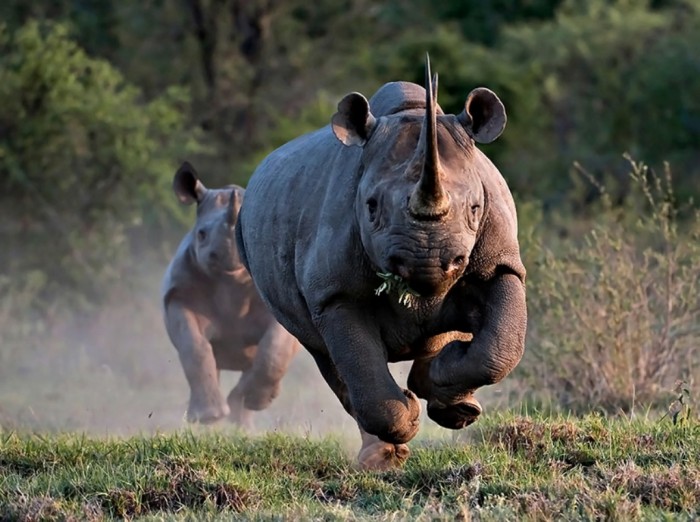

Providing safe habitat for just 20 rhinos would require a fenced-in sanctuary 400 square kilometers in size. Even if that feat had been accomplished, the land in northern Cameroon was poorly suited for rhinos and provided very little food. Under current conditions, however, this would probably make the remaining animals more vulnerable to poaching." The act of locating, catching and collecting these rhinos in one place would also be expensive and logistically next to impossible, as Cameroon at the time was plagued by corruption, civil unrest, currency devaluation and mistrust of the West. "Demographically and genetically the western black rhino seems doomed unless the discrete populations are captured and concentrated in one area of its range. In 1999 the World Wide Fund for Nature (WWF) published a report called " African Rhino: Status Survey and Conservation Action Plan." The authors wrote of the almost insurmountable challenge in preserving these final 10 western black rhinos. The remaining six lived in isolation, with an average of 60 kilometers between each animal and little, if any, hope to find one another and start breeding. Four of them lived in fairly close proximity to one another. The 10 last western black rhinos were scattered across 25,000 square kilometers of northern Cameroon. By 1997 the population had fallen to an estimated 10 final rhinos.Įven that count doesn't fully convey the precarious nature of the subspecies at that point. The country held an estimated 50 western black rhinos in 1991, a number that dropped to 35 just a year later. Chad's western blacks were wiped out within 10 years. All rhinos suffered the western black rhino, already weakened by decades of overhunting, was the hardest hit.īy 1980 the western black rhino's range had shrunk to just two countries: Cameroon, which held 110 of the animals, and Chad, where just 25 remained. Between 19 an astonishing 98 percent of black rhinos were killed by poachers, either to feed the new and voracious demand for TCM or, to a lesser extent, for horns to be used as ceremonial knife handles in the Middle East. That's when poachers descended on Africa. (This last claim is a fairly recent development.) Among the many "cures" touted by China's "New Medicine" was powdered rhino horn, which was said to cure everything from fevers to cancer. Even though Chairman Mao himself did not believe in TCM, he called for its use over Western medicine. The final nail in the rhinos' coffin began in the early 1950s, when Mao Zedong promoted so-called traditional Chinese medicine (TCM) as a tool for unifying the country he had recently come to lead. Farmers and ranchers at the time viewed large herbivores such as rhinos as pests and dangers to their crops.

Industrial agriculture came next, clearing many historic rhino habitats for fields and settlements. Widespread sports hunting in the first decades of the century quickly decimated rhino populations. Although it had lived in these countries for centuries, the western black-like most rhinos-found itself to be incompatible with the 20th century. Historically, the western black rhino had a fairly large range across central and western Africa, with populations in modern-day Cameroon, Chad, the Central African Republic, Sudan and South Sudan, making it the northernmost African rhino subspecies. It is a story of greed, indifference, hope and despair. This is the tale of how we lost one of those subspecies, the western black rhinoceros ( Diceros bicornis longipes). By 2001 that number had dropped to about 2,300 black rhinos and just three subspecies. At the beginning of the 20th century, an estimated one million black rhinoceroses from four different subspecies roamed the savannas of Africa.


 0 kommentar(er)
0 kommentar(er)
